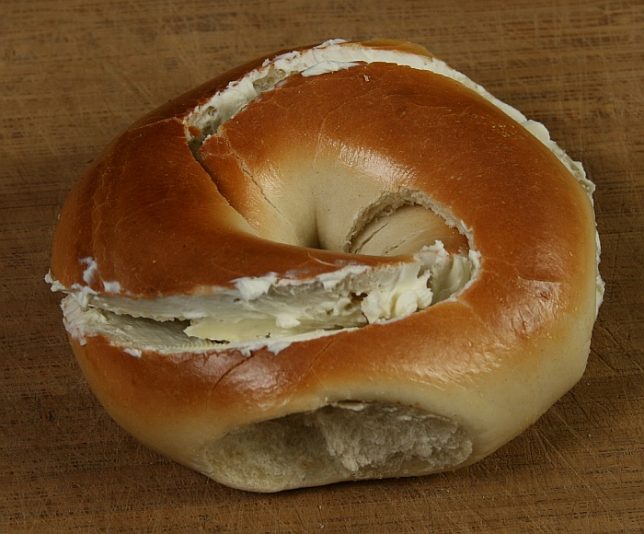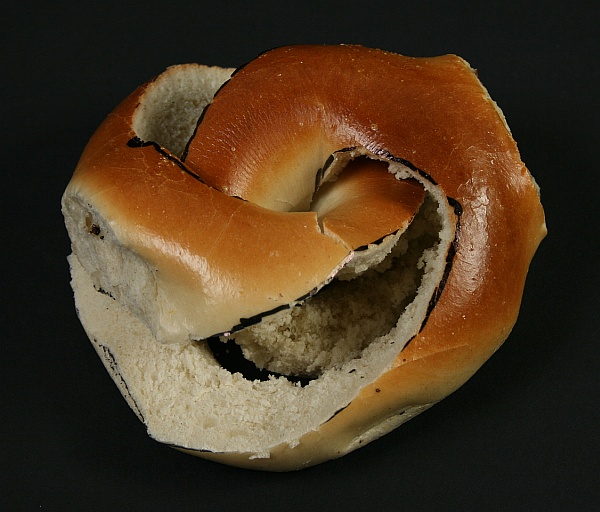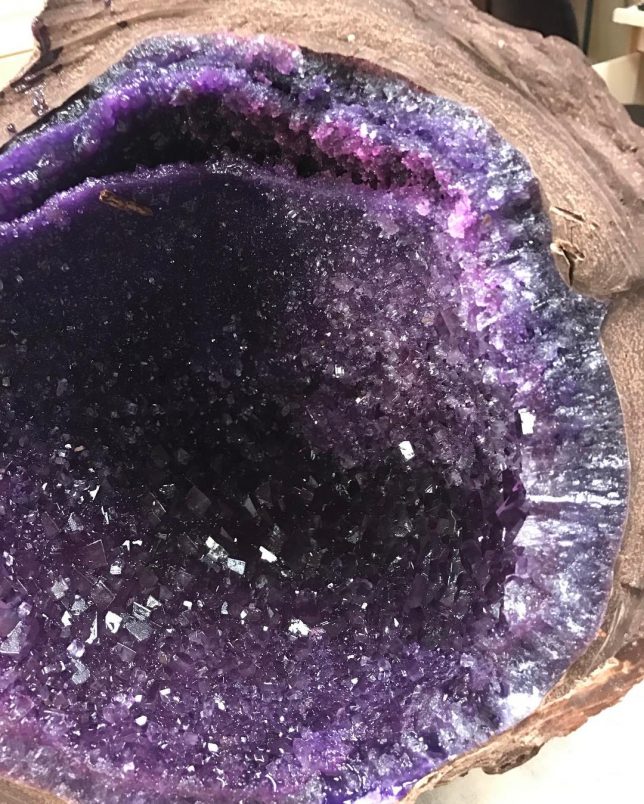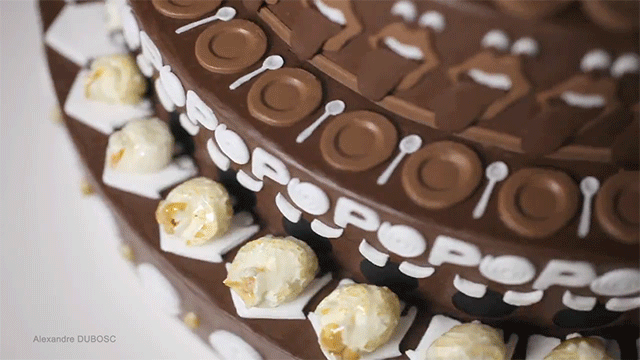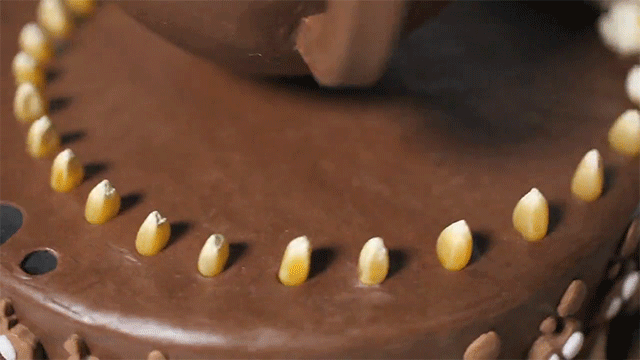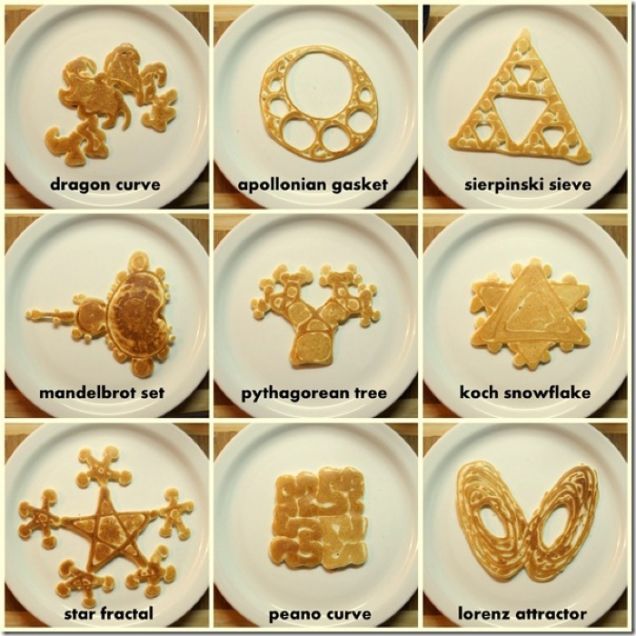Mobius Bagel
If you’ve been hankering for a “mathematically correct breakfast,” George W. Hart has some tips for you, including diagrams for turning your bagel into a trefoil knot. Hart specifies that mathematicians call it “the (2,3)-torus knot toasted with cream cheese,” but includes instructions for the simpler (3,2)-torus knot for beginning bagel math artists.
Chocolate-Covered Rock Candy Geodes
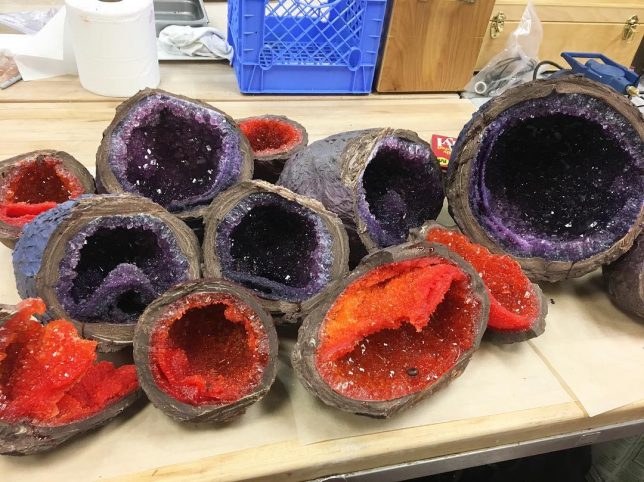
Geologists will love not only the incredible realism of these edible geodes made of sugar, but the complex process of their creation. Culinary students Alex Yeatts and Abby Lee Wilcox at the Culinary Institute of America in New York spent six months ‘growing’ sugar crystals inside chocolate ‘geodes,’ one of which weighed an impressive 50 pounds. They had to rotate the eggs every day to control the growth of the crystals, which are made of concentrated sugar syrup. Watching them crack one open is the most satisfying part.
Animated Zoetrope Cake
Though it could be argued that a zoetrope is really an artistic creation, it’s also a fun example of engineering, evolving over the years from simpler spinning lamps developed in 1st-century BCE China. It was refined by British mathematician William George Homer, who called his device the “daedaleum” and published details about its mathematical principles in January 1834. In this case, it takes the form of a chocolate cake called Melting POP by French director and animator Alexandre Dubosc.
Fractal Pancakes
Illustrator and former math teacher Nathan Shields uses pancake batter as an artistic medium to teach his children, blogging the results at 10 Minute Math. These fractal shapes are a pretty fun way to learn, but Shields doesn’t stop there, also ‘drawing’ edible marine invertebrates, human organs and extinct animals.
